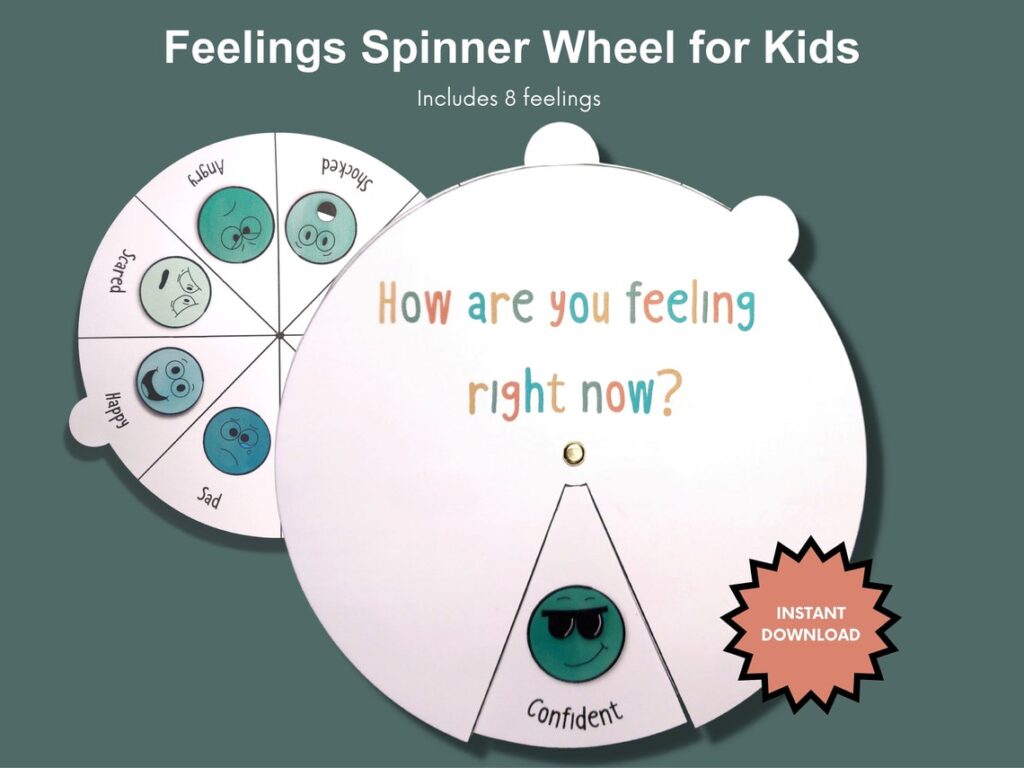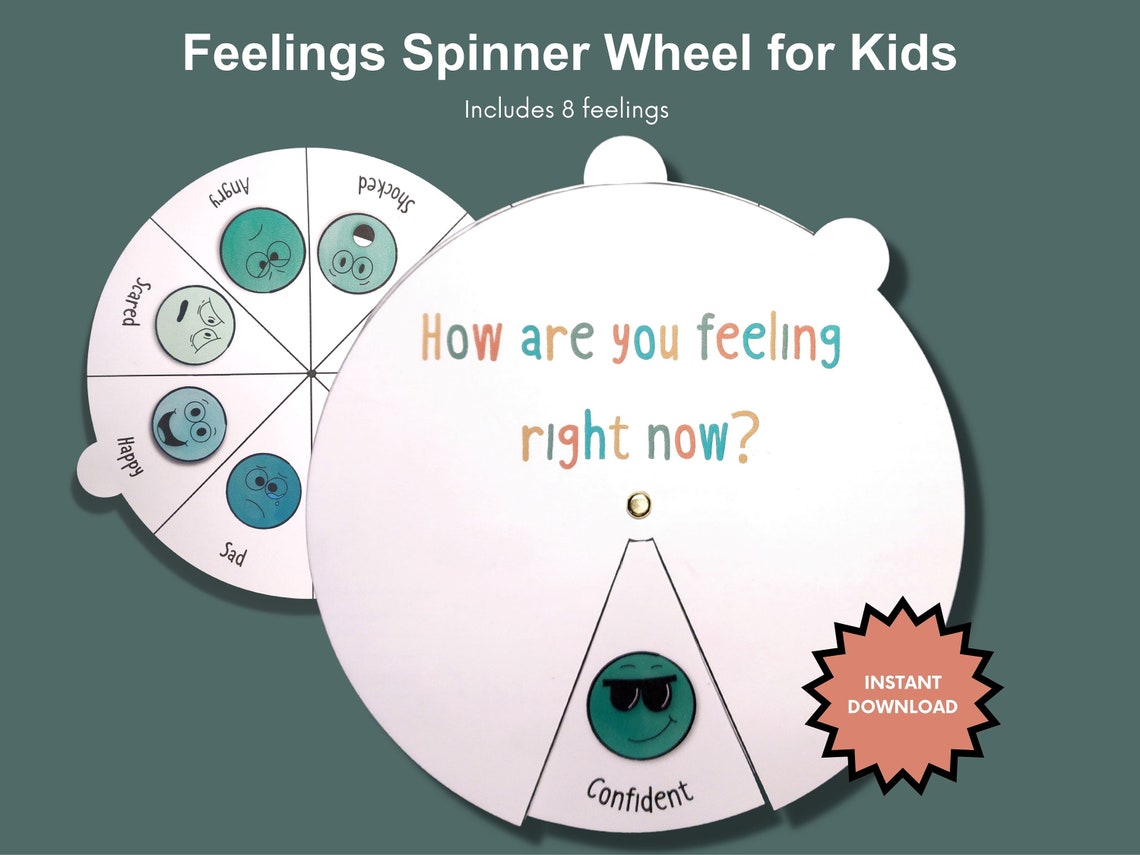
Unlocking Emotions: A Parent’s Guide to the Feelings Wheel for Kids
Navigating the complex world of emotions can be challenging for adults, let alone children. Youngsters often struggle to articulate what they’re feeling, leading to frustration, miscommunication, and even behavioral issues. Fortunately, tools like the feelings wheel for kids offer a visual and accessible way to help children identify and understand their emotions. This article will delve into the benefits of using a feelings wheel for kids, how to introduce it effectively, and provide practical tips for incorporating it into your child’s emotional development journey. We’ll also explore different variations of the feelings wheel and answer frequently asked questions to equip you with the knowledge to support your child’s emotional growth.
What is a Feelings Wheel?
A feelings wheel, at its core, is a visual representation of emotions, typically arranged in a circular format. The center of the wheel usually contains basic emotions like happy, sad, angry, scared, and surprised. As you move outward from the center, the wheel expands into more nuanced and specific emotions related to the core feelings. For example, under ‘happy,’ you might find emotions like joyful, content, grateful, and proud. This hierarchical structure allows children to start with a general feeling and then explore more precise descriptors.
The feelings wheel for kids is often adapted to be more child-friendly, using simpler language, brighter colors, and illustrations to make it engaging and accessible. The goal remains the same: to provide children with a vocabulary and a visual aid to identify and express their emotions more accurately.
Why Use a Feelings Wheel for Kids?
There are numerous benefits to introducing a feelings wheel for kids. Here are some key advantages:
- Expands Emotional Vocabulary: Children often have a limited vocabulary for describing their feelings. The wheel introduces them to a wider range of emotions, helping them move beyond simple terms like ‘happy’ or ‘sad.’
- Promotes Emotional Awareness: By visually representing different emotions, the wheel encourages children to become more aware of their internal states. They can learn to recognize the subtle nuances of their feelings and how they manifest physically and behaviorally.
- Facilitates Communication: The feelings wheel provides a common language for discussing emotions. When children can accurately identify and name their feelings, they can communicate their needs and experiences more effectively to parents, teachers, and peers.
- Enhances Emotional Regulation: Understanding emotions is the first step towards regulating them. By identifying what they’re feeling, children can begin to develop strategies for managing their emotions in healthy ways.
- Reduces Behavioral Problems: Many behavioral problems stem from underlying emotional issues. When children can express their feelings constructively, they are less likely to act out in negative ways.
- Builds Empathy: Using a feelings wheel can also help children develop empathy for others. By understanding their own emotions, they can better understand and relate to the feelings of those around them.
How to Introduce the Feelings Wheel to Children
Introducing the feelings wheel for kids should be a positive and engaging experience. Here are some tips for getting started:
- Choose the Right Wheel: Select a feelings wheel that is age-appropriate and visually appealing. Look for wheels with clear, simple language and engaging illustrations. Several printable options are available online, or you can create your own.
- Introduce it in a Calm Setting: Find a quiet time when you and your child are relaxed and free from distractions. Avoid introducing the wheel during a moment of emotional distress.
- Start with Basic Emotions: Begin by focusing on the core emotions in the center of the wheel. Discuss what each emotion feels like and give examples of situations that might trigger that feeling.
- Use Real-Life Examples: Connect the emotions on the wheel to real-life experiences. Ask your child to think about times they felt happy, sad, angry, or scared.
- Make it Interactive: Don’t just present the wheel as a static tool. Ask questions, play games, and encourage your child to explore the different emotions. You could ask, “Can you show me what your face looks like when you feel frustrated?” or “What makes you feel grateful?”
- Be Patient and Supportive: Learning to identify and express emotions takes time. Be patient with your child and offer encouragement along the way. Validate their feelings, even if you don’t understand them.
- Model Emotional Expression: Children learn by observing the adults around them. Model healthy emotional expression by talking about your own feelings in an appropriate way. For example, you could say, “I’m feeling a little stressed today because I have a lot of work to do.”
Practical Tips for Using the Feelings Wheel
Once you’ve introduced the feelings wheel for kids, here are some practical tips for incorporating it into your daily life:
- Daily Check-Ins: Start each day with a quick check-in using the wheel. Ask your child how they’re feeling and encourage them to point to the emotion that best describes their current state.
- During Emotional Moments: When your child is experiencing a strong emotion, use the wheel to help them identify what they’re feeling. This can be particularly helpful during tantrums, arguments, or times of anxiety.
- Story Time: Use the feelings wheel during story time to discuss the emotions of the characters. Ask your child how they think the characters are feeling and why.
- Creative Activities: Incorporate the wheel into creative activities like drawing, painting, or writing. Ask your child to create artwork that represents a particular emotion.
- Conflict Resolution: Use the wheel as a tool for conflict resolution. Help children identify their feelings and the feelings of others involved in the conflict. This can promote empathy and understanding.
- Bedtime Routine: End each day with a brief reflection using the wheel. Ask your child to think about the different emotions they experienced throughout the day and how they managed those feelings.
Different Variations of the Feelings Wheel
While the basic concept of the feelings wheel remains the same, there are many different variations available to suit different ages and needs. Some wheels are designed specifically for younger children, using simpler language and more visual cues. Others are geared towards older children and teenagers, with more complex emotions and nuanced language. Some variations also include coping strategies or suggestions for managing difficult emotions.
You can find printable feelings wheel templates online, or you can create your own customized wheel. Consider your child’s age, emotional maturity, and individual needs when choosing or creating a feelings wheel.
Addressing Common Challenges
While the feelings wheel for kids is a valuable tool, you may encounter some challenges along the way. Here are some common issues and how to address them:
- Difficulty Identifying Emotions: Some children may struggle to identify their emotions, even with the help of the wheel. Be patient and offer gentle guidance. Ask clarifying questions and provide examples to help them narrow down their feelings.
- Resistance to Using the Wheel: Some children may resist using the wheel, particularly if they are feeling overwhelmed or resistant to discussing their emotions. Don’t force it. Try introducing the wheel at a different time or in a different way.
- Over-Reliance on the Wheel: While the wheel is a helpful tool, it’s important to encourage children to develop their own emotional vocabulary and awareness. Don’t let them become overly reliant on the wheel. Encourage them to describe their feelings in their own words.
- Confusing Emotions: Some emotions can be easily confused, such as sadness and loneliness, or anger and frustration. Help children understand the nuances of different emotions by discussing the specific situations that might trigger each feeling.
The Feelings Wheel and Emotional Intelligence
Using a feelings wheel for kids is a powerful way to foster emotional intelligence. Emotional intelligence, or EQ, encompasses the ability to understand, use, and manage one’s own emotions in positive ways, communicate effectively, empathize with others, overcome challenges, and defuse conflict. By helping children develop emotional awareness and vocabulary, the feelings wheel lays the foundation for strong emotional intelligence skills. These skills are essential for success in all areas of life, from school and work to relationships and personal well-being.
Conclusion
The feelings wheel for kids is a simple yet powerful tool that can help children navigate the complex world of emotions. By expanding their emotional vocabulary, promoting emotional awareness, and facilitating communication, the wheel empowers children to understand and manage their feelings in healthy ways. Incorporating the feelings wheel into your child’s life can lead to improved emotional regulation, reduced behavioral problems, and stronger relationships. So, take the time to explore this valuable resource and unlock your child’s emotional potential. [See also: How to Talk to Your Child About Their Feelings] [See also: Activities to Help Children Express Emotions]

